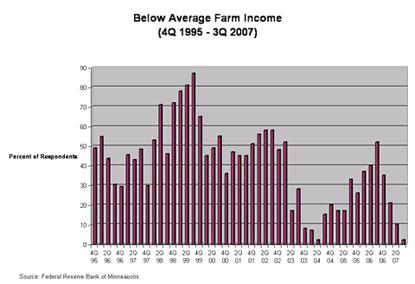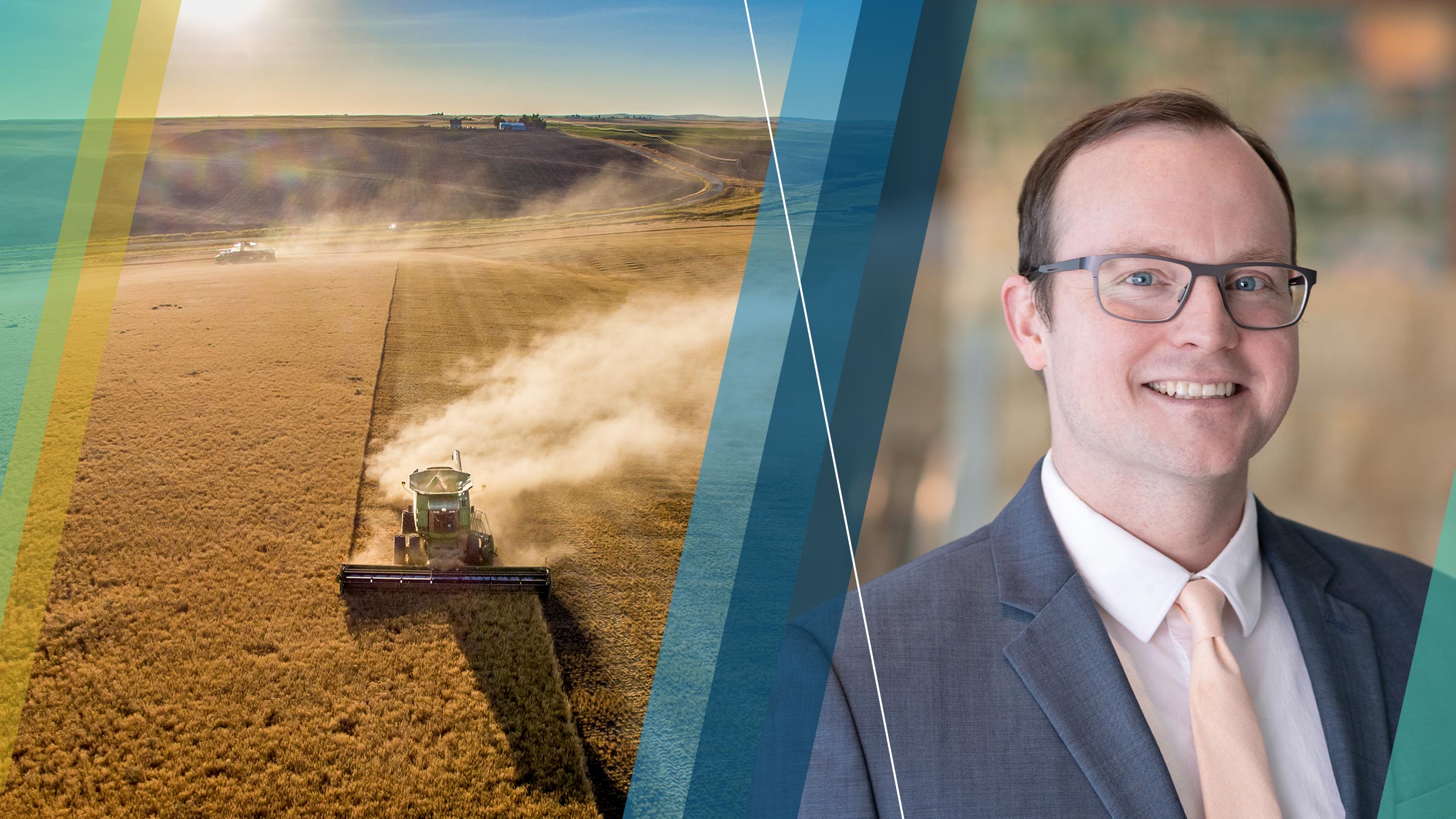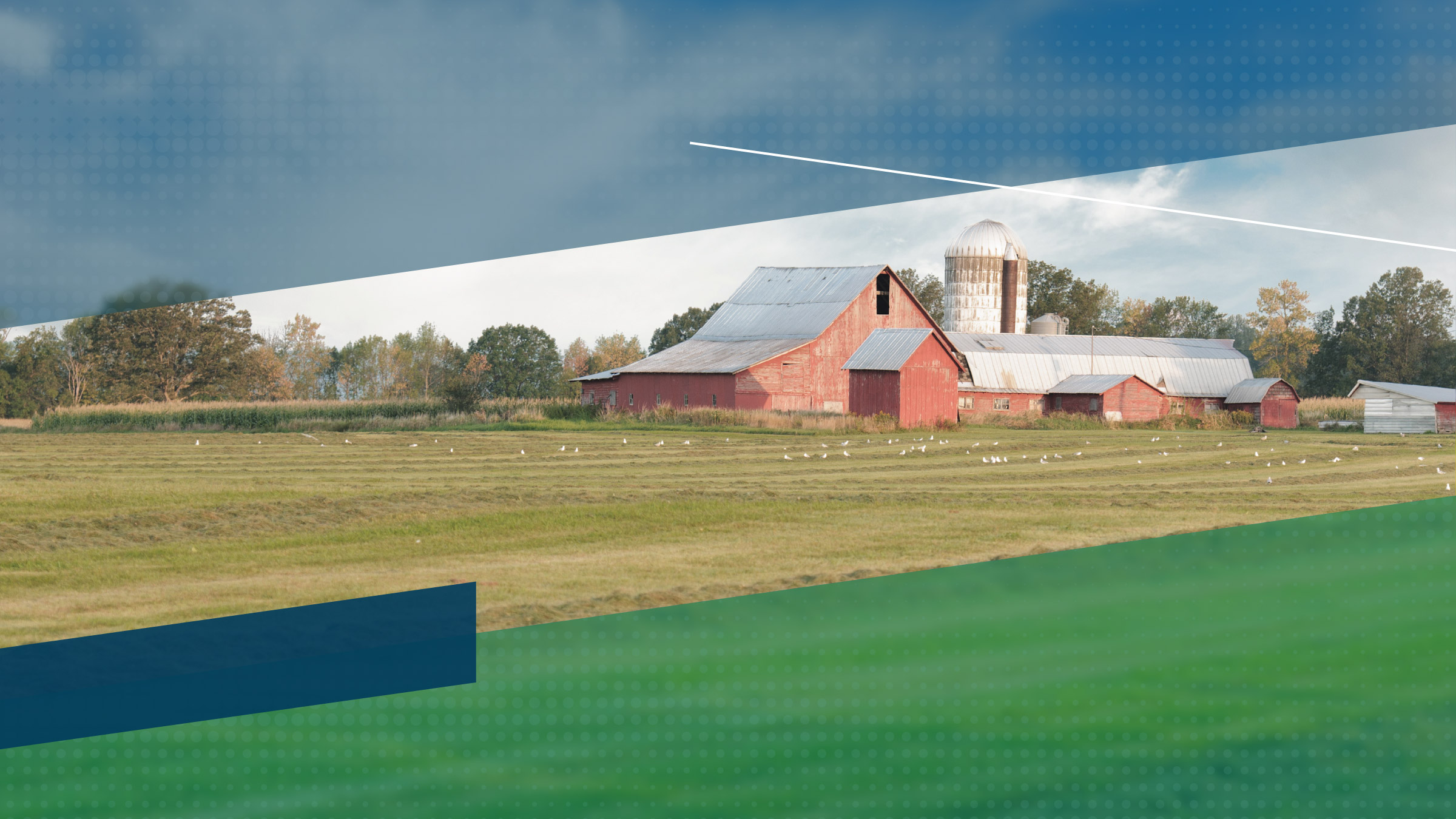“Exceptional year!” reflects the attitudes of many respondents to the Minneapolis Fed’s third-quarter (October 2007) agricultural credit conditions survey. Despite adverse weather and higher input costs, ag lenders are pleased with their customers’ performance.
Most survey respondents reported higher income in the third quarter, and even more expect above-normal income in the fourth quarter. Household spending and capital investment have increased and are expected to continue to rise. Almost all producers were on time with loan payments, leading to stable borrowing and repayment. Land prices increased, and interest rates decreased slightly. The few complaints related to areas that were hit by drought or flooding, and there was some concern about higher fuel and fertilizer costs.
Farm income, household spending and capital investment
Farm income increased throughout the Ninth District during the third quarter. In addition to a solid harvest, prices were strong. “Combine higher yields with market prices that are, for the most part, nearly triple those used in original cash flow plans, and the year should turn out very well for most,” a North Dakota banker said. Above-average income was noted in every district state, with the most positive reports coming from Wisconsin lenders.
Bountiful profits translated into additional capital investment and household spending in each state in the district. “The farmers will be wanting and needing to spend money,” commented a South Dakota lender. Even though Main Street shops and equipment dealers are busy, some lenders worry about higher input costs. “We are experiencing large increases in [prices for] fertilizer and seeds,” a respondent from South Dakota said.

Loan repayments and renewals
Many producers used their increased income to pay down loans and did not acquire renewals or extensions. Nearly a third of all survey respondents reported increased loan repayments, and the majority of the balance indicated no change. The number of troubled borrowers decreased, with 14 percent of the lenders surveyed indicating decreases in loan renewals/extensions and only 7 percent reporting increases. “Repayments of loans should be much higher … than previous years,” said a South Dakota lender.
Demand for loans, required collateral and interest rates
Overall loan demand was stable. The same number of respondents (23 percent) reported increased loan demand as reported decreased loan demand. Only 7 percent of lenders reported increased collateral requirements, with the balance reporting no change. Only 3 percent of respondents indicated that loans were refused because of a shortage of funds. Interest rates dropped about 10 basis points for machinery loans, variable operating loans and fixed-rate real estate loans. Fixed rates for operating loans dropped about 20 basis points, while variable rates for real estate loans were little changed in the third quarter compared with the second quarter.
Land values
Land values continue to increase. Survey results showed that average values for nonirrigated farmland and ranchland increased 17 percent and 15 percent, respectively, from a year ago. The fastest increases in nonirrigated farmland and ranchland prices were in Minnesota, growing at rates of 19 percent and 22 percent, respectively. The slowest growth rates occurred in North Dakota, at 7 percent and 5 percent. (Land prices can vary significantly, not only from state to state, but also from parcel to parcel. For more detailed information on agricultural prices, see the Minnesota Land Economics Web site.
Outlook
The outlook for fourth-quarter financial conditions is positive. A Montana banker expects solid markets and profits for calves and wheat. Almost three-quarters of lenders expect above-average fourth-quarter income. “The good crop yields will most certainly continue to drive cash rental rates as well as land prices, which continue to rise at a very quick pace,” a South Dakota respondent said. Strong household and capital spending are also expected in the fourth quarter. Loan pay-downs will also heat up. However, a Minnesota respondent sounded a note of caution: “Input costs for fuel, fertilizer, seed, chemicals, cash rent and interest expense will be higher in 2008.”
Appendices: State Fact Sheet | State Fact Sheet-Outlook




